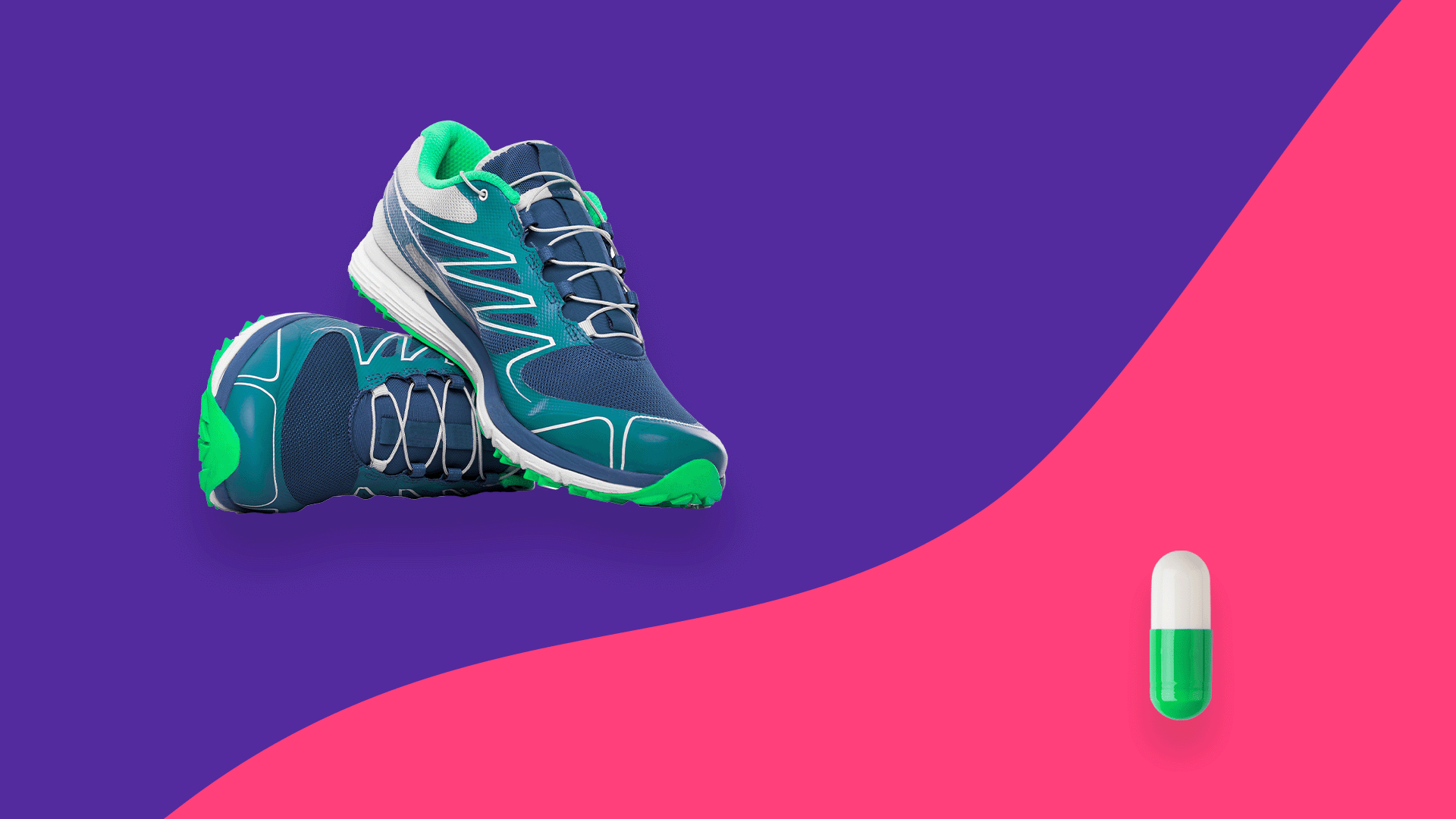Health experts recommend exercise as a way to help naturally improve your mental health and stay physically fit. For people with attention deficit hyperactivity disorder (ADHD), there’s substantial evidence that regular exercise can reduce major symptoms in addition to improving executive functions, like time management and organization. But if you’re taking Vyvanse, a stimulant medication, you may be concerned about whether combining exercise with Vyvanse is a good idea. Read on to learn how to safely exercise on Vyvanse.
What is Vyvanse?
Vyvanse (lisdexamfetamine) is a long-acting stimulant in the amphetamine class that’s prescribed to treat ADHD symptoms, such as hyperactivity and impaired focus. “Stimulants increase the availability of dopamine, which can help regulate behavior and improve attention,” says Sean Ormond, MD, a physician at Atlas Pain Specialists in Phoenix, Arizona. Vyvanse may also be prescribed to people with binge eating disorder to help control appetite.
Can you work out on Vyvanse?
Yes, Vyvanse and exercise are generally safe in combination. But, like any medical question, it depends on your overall health and medical history.
“As Vyvanse is a stimulant medication, there can be potentially serious side effects,” says Stephen Gilman, MD, a psychiatrist at Addiction Psychiatrist NYC. “Since stimulant-based medication can cause a rapid increase in heart rate and blood pressure, exercising on Vyvanse can be risky if the individual has an underlying heart or blood pressure problem,” explains Dr. Gilman. In other words, for folks with heart conditions or blood pressure problems, getting your heart rate up during a vigorous workout can be dangerous.
However, for individuals with no known heart disease, blood pressure issues, or other medical contraindications, exercise while on the medication is considered a safe activity that should be encouraged, says Dr. Gilman. The same goes for any stimulant, not just Vyvanse.
What are the side effects of working out on Vyvanse?
Vyvanse may cause weight loss or increased energy levels—especially if the dosage is too high. If you’re suddenly shedding pounds, or find you’re easily exercising longer than normal—let your healthcare team know so they can find the right dosage for you. Vyvanse is not recommended by healthcare providers as a performance-enhancing drug.
Like any medication, there are potential side effects—whether you’re breaking a sweat or not. Some of the most common ones include:
- Anxiety
- Diarrhea
- Nausea
- Dizziness
These can worsen during exercise or impair your workout routine.
Rare, but serious side effects for people with cardiovascular issues, high blood pressure, or a family history of either include:
- Sudden death in people who have heart problems or heart defects
- Sudden death, stroke, and heart attack in adults
- Increased blood pressure and heart rate
You should let your healthcare provider know about any side effects you experience while taking Vyvanse, whether you’re hitting the gym or not. If you’re noticing that certain side effects occur only during or after training, be sure to mention that, too.
Does it matter if you exercise before or after Vyvanse? To mitigate the potential for side effects, your provider might recommend that you train before taking your medication or have you track how you’re responding to workouts and then adjust your medication dosage. Do not attempt to adjust your medication dosage on your own to eliminate side effects. And, if at any point while taking Vyvanse and exercising, you begin to have chest pains or feel like you can’t breathe, call your provider or seek emergency help.
Can I take Vyvanse and pre-workout supplements?
The main ingredient in most pre-workout supplements is caffeine, another stimulant. Taking other stimulants with Vyvanse may increase the risk of Vyvanse side effects, like increased heart rate and blood pressure. This is true even if you take the pre-supplement and exercise before taking your dose of Vyvanse for the day, since you can still feel the effects of caffeine hours later. Caffeine can also cause side effects that are the same as Vyvanse, which can make it difficult to ascertain whether any side effects you feel are from Vyvanse, your pre-workout, or both.
The best course of action if you’re thinking about taking pre-workout supplements—or any kind of supplement, in fact—is to ask your healthcare team. They’ll be able to advise you whether the supplement you’re thinking about will interact with your prescription and how best to move forward.
What are the best exercises to do while on Vyvanse?
Physical activity helps the brain become more active, like a natural stimulant that improves focus and memory, says Dr. Ormond. “Regular exercise, including both aerobic exercise and strength training exercise, can be of benefit in decreasing the chronic symptoms of attention deficit hyperactivity disorder,” agrees Dr. Gilman. That includes activities like swimming, running, and biking—along with weight training or resistance training.
Generally speaking, people without any history of heart or blood pressure problems who are cleared for exercise while on Vyvanse should be fine to do most workouts. However, aerobic exercise, which can quickly increase your heart rate, may worsen medication side effects. If that’s a concern, have a chat with your provider. Ideally, you’ll be able to work together to find an exercise routine that’s healthy for you.
When should you speak with your doctor?
Because Vyvanse can raise your heart rate and blood pressure, it’s a good idea to chat with your provider about your intended exercise routine before starting to take Vyvanse so you can get the all-clear. This is particularly important if you have a history of heart issues or high blood pressure. If you’re changing your workouts fairly drastically—like going from walks and yoga to HIIT class and training for a race—it’s also best to check in with your provider, because they may recommend other treatment adjustments.











